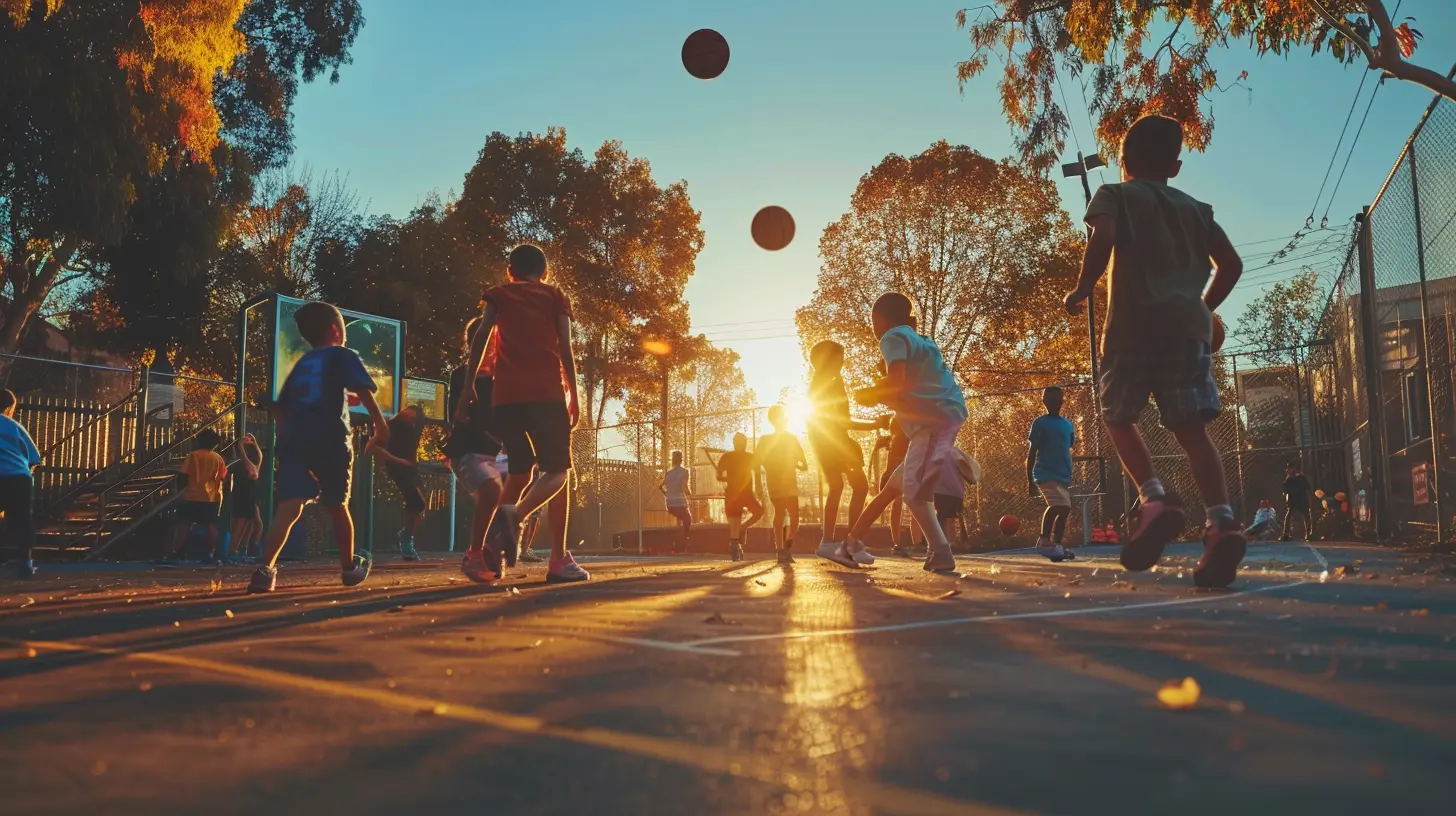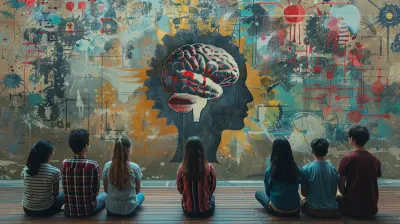The Connection Between Physical Activity and Mental Health in Schools
19 May 2025
Introduction
Have you ever noticed how a short walk or a quick workout can instantly lift your mood? That’s not just a coincidence—it’s science! Physical activity isn't only about staying in shape; it plays a crucial role in mental health as well.
For students, the connection between movement and mental well-being is even more significant. Schools tend to focus primarily on academics, but what if I told you that a little more physical activity in a student’s day could actually improve their focus, mood, and overall performance?
In this article, we’ll dive into the powerful link between physical activity and mental health in schools. Let’s break it down and see why keeping kids active is one of the best things we can do for their minds and bodies.

How Physical Activity Boosts Mental Health
1. Reduces Stress and Anxiety
School can be overwhelming. Exams, homework, social pressure—it all adds up. But here’s the good news: physical activity can be a natural stress reliever.When students exercise, their bodies release endorphins, often referred to as "happy hormones." These chemicals help reduce stress and promote a sense of calm. Whether it's a game of soccer, a quick run, or even a short dance session, movement helps burn off anxiety and improve emotional stability.
2. Improves Focus and Academic Performance
Ever struggled to concentrate after sitting for hours? That’s because our brains need movement just as much as our bodies do.Regular physical activity increases blood flow to the brain, which helps improve cognitive function. This means that students who engage in physical activities tend to have better memory, sharper focus, and improved problem-solving skills. In fact, studies have shown that kids who are active perform better academically than those who lead a sedentary lifestyle.
3. Boosts Self-Esteem and Confidence
Confidence is key, especially in school. Physical activities, whether it's playing sports, dancing, or even simple stretching, help students feel good about themselves.When children see progress in their physical abilities—running faster, jumping higher, or even mastering a new move—they feel a sense of accomplishment. This sense of achievement translates into the classroom, boosting their confidence and self-worth.
4. Encourages Better Sleep
We all know how frustrating it is to toss and turn at night. Poor sleep can lead to a sluggish mood, lack of focus, and irritability. Luckily, physical activity helps regulate sleep patterns.When students engage in regular movement, their bodies naturally become more tired, making it easier for them to fall asleep and stay asleep. And let’s be real—well-rested students are happier, more energized, and ready to take on the day.

Why Schools Need to Prioritize Physical Activity
1. Traditional Schooling Overlooks Movement
Schools often prioritize academic achievement over physical well-being. Long hours of sitting in classrooms with minimal movement can lead to sluggishness, lack of engagement, and even mental exhaustion.Incorporating physical activities throughout the school day—whether through recess, sports, or even movement breaks—can transform the learning experience.
2. Mental Health Issues Are on the Rise
The number of students experiencing anxiety, depression, and other mental health challenges has been increasing. While therapy and counseling are essential, physical activity can be an effective, accessible, and natural way to improve mental health.Encouraging students to move more could provide them with a coping mechanism to deal with stress, emotions, and even social pressures.
3. Movement Breaks Can Improve Classroom Behavior
Ever noticed how students in a classroom become restless after sitting too long? Incorporating short, frequent movement breaks can improve behavior and concentration. A quick stretch, a short walk, or a couple of jumping jacks between lessons can help reset the brain and keep students engaged.
Practical Ways Schools Can Increase Physical Activity
1. Daily Physical Education (PE) Classes
Instead of treating PE as an occasional subject, schools should make it a daily habit. PE classes help students stay active, develop teamwork skills, and improve their overall mental well-being.2. Active Classroom Strategies
Who says learning has to be done sitting down? Teachers can incorporate physical activity into lessons by using standing desks, incorporating movement-based learning, or organizing outdoor lessons when possible.3. Encourage Extracurricular Sports and Clubs
Not every student loves traditional sports, but activities like dance, yoga, or even martial arts clubs can be great alternatives. Providing different options allows students to find something they enjoy while staying active.4. Make Recess Non-Negotiable
Some schools have reduced or even eliminated recess breaks to make space for more academic time. However, recess is crucial! It not only gives students a mental break but also provides an opportunity for social interaction and movement.
The Role of Parents and Teachers in Promoting Physical Activity
1. Parents: Be Role Models
Kids are more likely to be active if they see their parents prioritizing movement. Simple activities like evening walks, weekend sports, or even bike rides can create lifelong healthy habits.2. Teachers: Integrate Movement into Learning
Teachers can incorporate physical activity in creative ways—like using active games for lessons or allowing students to stretch and move between subjects. A little movement can go a long way in improving engagement and mental well-being.3. Schools: Invest in Playgrounds and Facilities
Having access to open spaces, playgrounds, and sports facilities encourages students to move. Schools should prioritize creating environments that promote active lifestyles.Conclusion
The connection between physical activity and mental health in schools is undeniable. Movement isn’t just about physical fitness—it’s about boosting confidence, reducing stress, improving focus, and fostering emotional well-being.By integrating more physical activity into school routines, we can create a generation of happier, healthier, and more engaged students. It’s time to recognize that active bodies create active minds!
all images in this post were generated using AI tools
Category:
Mental Health In SchoolsAuthor:

Madeleine Newton
Discussion
rate this article
4 comments
Peregrine Lambert
Empowering students through movement fosters resilience and mental well-being!
May 25, 2025 at 4:13 AM

Madeleine Newton
Absolutely! Movement is crucial for building resilience and enhancing mental well-being among students. Thank you for your insight!
Jillian Butler
This article effectively highlights the crucial link between physical activity and mental health in schools. Encouraging students to engage in regular exercise can foster improved well-being and academic performance. Great insights!
May 22, 2025 at 12:32 PM

Madeleine Newton
Thank you for your positive feedback! I'm glad you found the insights on the link between physical activity and mental health valuable.
Dax O'Neal
Who knew that doing jumping jacks could also help with math problems? Let’s face it: kids need to run around to keep their brains from turning into mush! So, throw in some cartwheels between classes and watch those grades do a happy little dance!
May 21, 2025 at 3:20 AM

Madeleine Newton
Absolutely! Physical activity boosts brain function and focus, making it a fun and effective way to enhance learning.
Nadine McCartney
This article effectively highlights the vital link between physical activity and mental health in schools, emphasizing the importance of fostering environments that support both physical and emotional well-being.
May 19, 2025 at 3:57 AM

Madeleine Newton
Thank you for your insightful comment! I'm glad you found the article's emphasis on the connection between physical activity and mental health in schools valuable.



